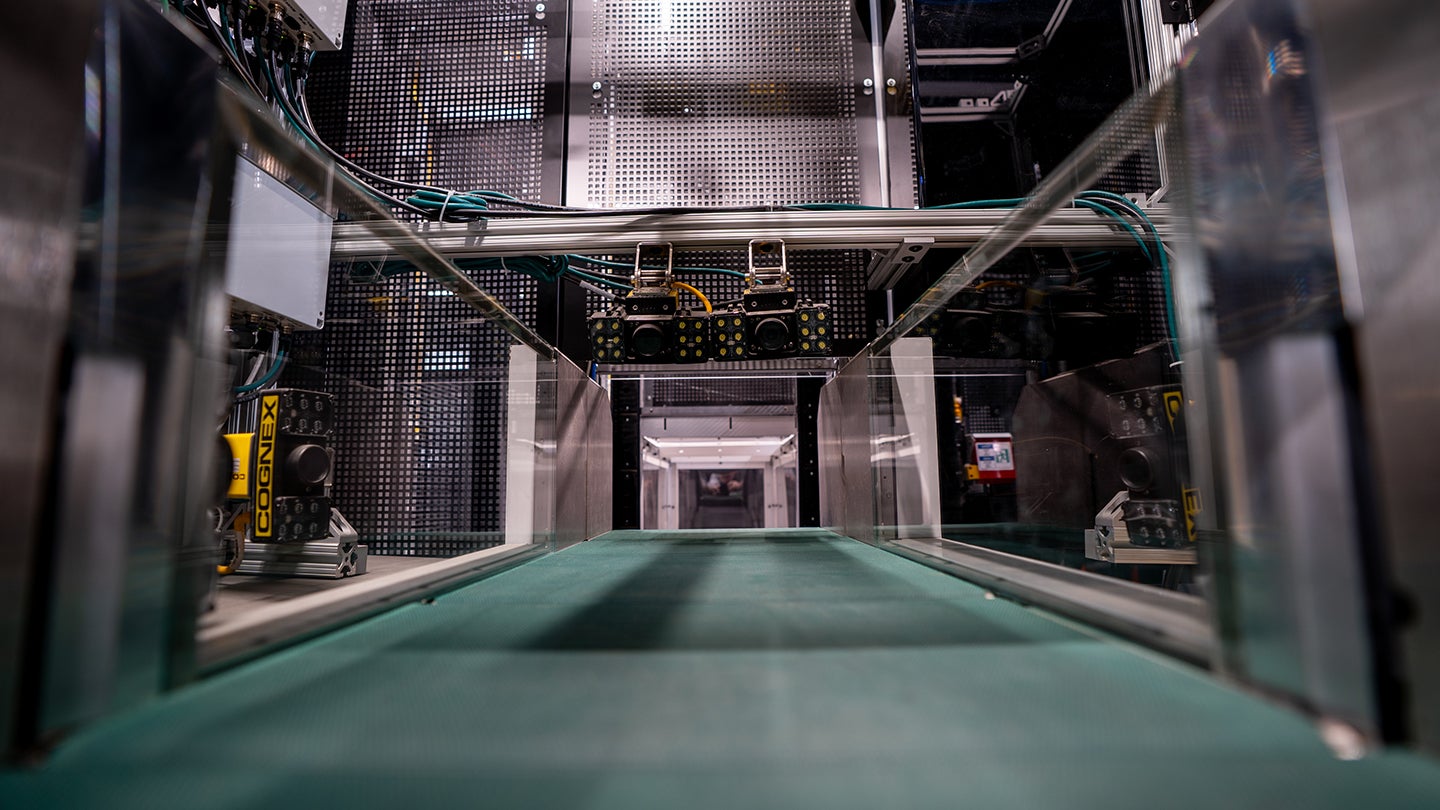Solution
REVERSE LOGISTICS
Modernizing Reverse Logistics
OPEX understands the complexities and challenges of reverse logistics. We transform how businesses handle returns, providing cost-effective, efficient, and precise sorting capabilities. Embrace the future of return logistics with OPEX, where cutting-edge technology meets unparalleled expertise. Discover how our solutions can elevate reverse logistics, ensuring customer satisfaction and operational excellence.
The OPEX Sure Sort automated sorting system streamlines returns sorting, reducing manual intervention and errors. Returned items are quickly sorted into bins on the system, which can be assigned to locations within a warehouse or to a returns processing center for put away. This simplification reduces the complexity of the returns process, allowing for a smoother and more efficient operation. The system can operate offline and sort SKU items to be automatically replenished without additional integrations and infrastructure.
Sure Sort enables businesses to quickly assess and process refunds and exchanges by expediting returns processing with fast and versatile sorting capabilities. This rapid handling directly translates to enhanced customer satisfaction due to quicker service.
Sure Sort's compact and dense design maximizes the use of warehouse space. Its ability to handle high volumes of items in a relatively small footprint helps businesses manage returns more effectively within existing space constraints. The system is also scalable and able to adjust to future changes in demand with additional expansion modules and iBOTs. OPEX also offers dense automated storage and retrieval systems, which can be used to put away and store returns with high SKU density.
Sure Sort significantly reduces the need for manual labor in the sorting process. The system automatically sorts items at a high speed into assigned sort locations, removing the need for manual put walls to organize returned inventory. This means fewer staff are needed to handle and sort returns, saving labor costs and reducing human error.
Discover OPEX’s Range of Systems for Reverse Logistics
Sure Sort®
Sure Sort automates the returns process, reducing the need for space and personnel. With the capacity to induct up to 2,400 items per hour, only one operator is required. Additional staffing may be needed to collect the returned items. Automation can reduce the risk of return fraud and increase the efficiency of the returns process, improving a company's bottom line.
Sure Sort X®
Sure Sort X is a reliable, robust system streamlining the return process with advanced sorting and product handling capabilities. With the ability to sort small and large items up to 20 pounds, Sure Sort X increases efficiency, productivity, and throughput in a compact, dense footprint. The modular design allows you to add more expansion modules and iBOTs to meet growing demand.Perfect Pick®
Perfect Pick AS/RS (automated storage and retrieval system) stores inventory safely in a closed loop to maximize storage for high volumes of returned items. Perfect Pick minimizes the chances of misplacement or loss while putting away returns or retrieving them from the system. OPEX Cortex software ensures precise tracking of items, reducing errors and enhancing inventory control.
“The Perfect Pick HD system has been received well by our employees. They are excited about the system and see the advantages it provides.”
Rodney Bartley
CEO, NPFulfilment
Other Resources You May Find Helpful
Insight
10 Ways to Lower Returns Costs and Optimize Your Reverse Logistics
White Paper
Increasing Distribution Center Productivity with Automated Put Walls
Insight
A Quick Guide to Reverse Logistics
Video
Sure Sort: Dependable Solutions in an Uncertain World
NEXT LEVEL AUTOMATION
Unlock Operational Efficiency with OPEX
OPEX is powering the future of automation. Contact us to learn more about how our vertically integrated automated solutions can help take your business to new heights.